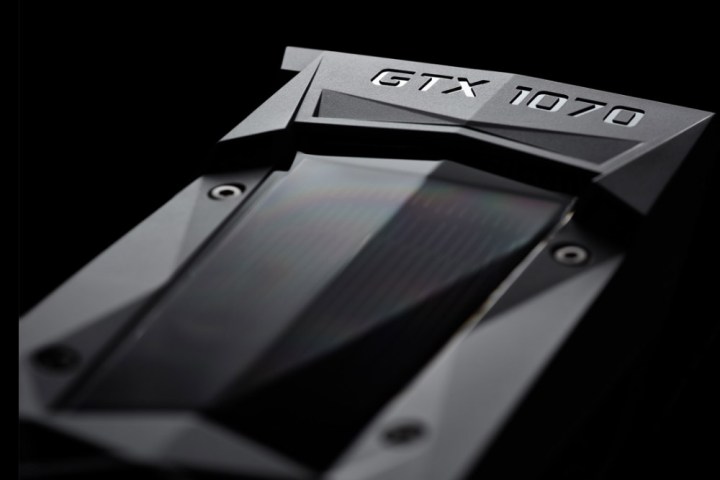
On the overclocking front, the problem is related to the speed of adjusting the voltage from the low power idle frequency/voltage operating point (P-States) so the memory has enough voltage to handle the overclocked load. Owners able to keep the idle voltage above 0.800 volts before they apply the overclock won’t see a problem. Otherwise, they will see corrupted imagery such as checkerboard patterns.
Outside of overclocking, many GTX 1070 owners are experiencing graphical “artifacts,” flickering, and other abnormal issues using the card’s default configuration. Again, this problem only seems to apply to cards using Micron’s supplied VRAM. If you’re not sure what brand your GTX 1070 is using, the best way to find out is to download and use the free GPU-Z utility. There’s a field labeled “Memory Type” that will report either “GDDR5 (Micron)” or “GDDR5 (Samsung)” memory.
It’s not unusual for third-party manufacturers to swap out memory for a different brand in their products. In this case, they moved from Samsung to Micron, but end users shouldn’t see any performance changes. Companies purchase memory in bulk, so Nvidia partners may have found a better deal grabbing a batch from Micron instead of Samsung.
Because of this, the problem isn’t one Nvidia will solve through a graphics driver. Instead, individual manufacturers are handling the problem through their own BIOS updates. Here are the suppliers who have produced a fix thus far (thanks Guru3D!):
- EVGA: BIOS Update – 86.04.50.00.70/86.04.50.01.70 (10/17/2016)
- Gainward: Select your specific card > BIOS
- Palit: Select specific card > BIOS
Right now, the following manufacturers have not posted a fix: Asus, Gigabyte (next week), Inno3D, KFA2/Galaxy, MSI (working on it), PNY, and Zotac.
Obviously, Nvidia’s GTX 1070 comes in all shapes and sizes from various manufacturers. With a base price of $380, they all sport 8GB of GDDR5 on-board memory. The GTX 1070 is at the upper end of Nvidia’s GTX 10 Series rollout, with the GTX 1080 serving as the flagship product of the family followed by the GTX 1060 cards and the new GTX 1050 models. All GTX 10 Series cards are based on Nvidia’s latest “Pascal” graphics chip, providing a more powerful punch-per-watt than the previous generation.
Nvidia actually serves up a “Founders Edition” model of the GTX 1070 on its own (as does its partners) costing $450. It appears to use 8GB of GDDR5 memory from Samsung, so no worries there regarding Micron-related issues. It sports 1,920 cores, a base clock speed of 1,506MHz, and a boost clock speed of 1,683MHz. It also supports SLI configurations in case you’re itching to purchase more than just one unit for your PC gaming pleasure.



